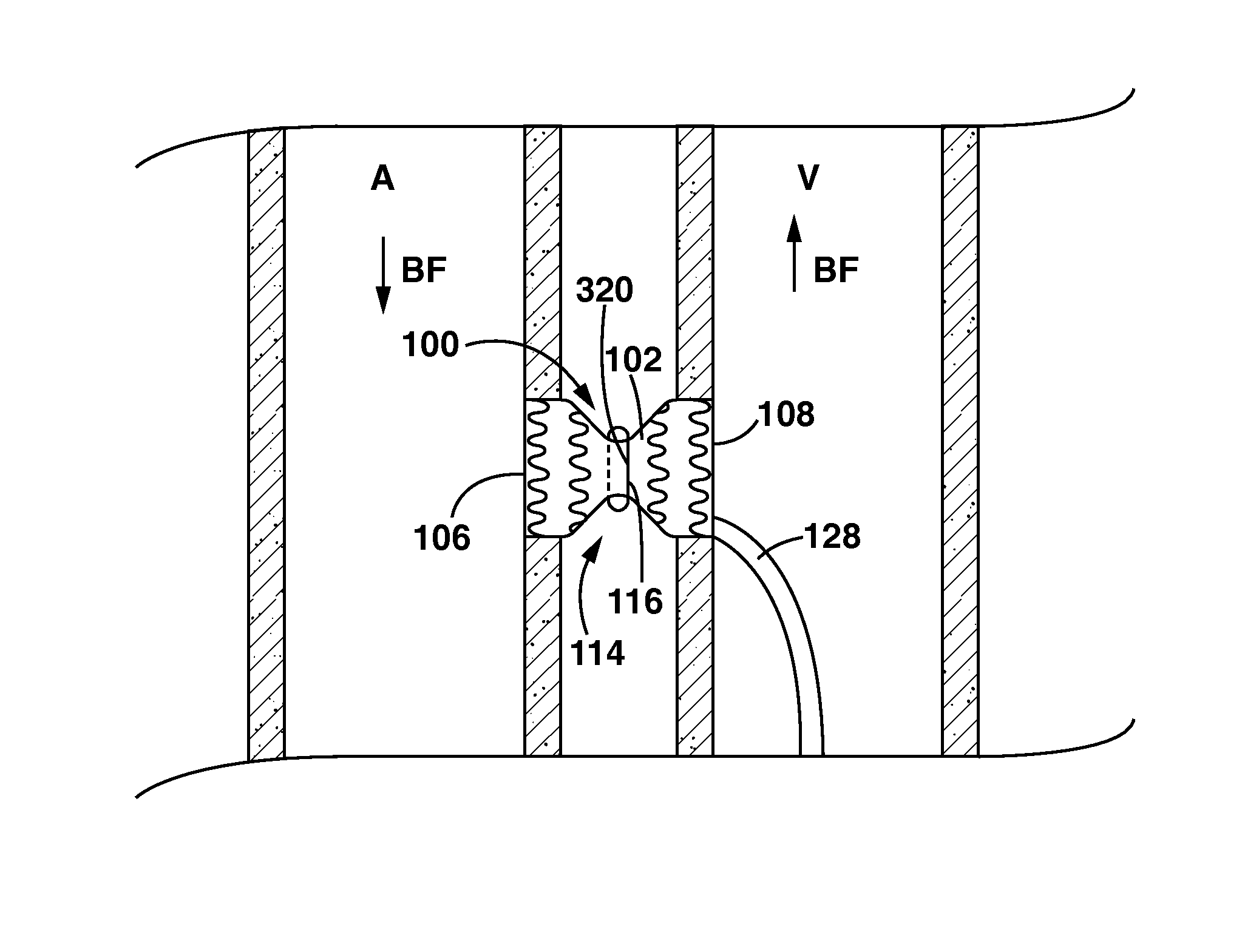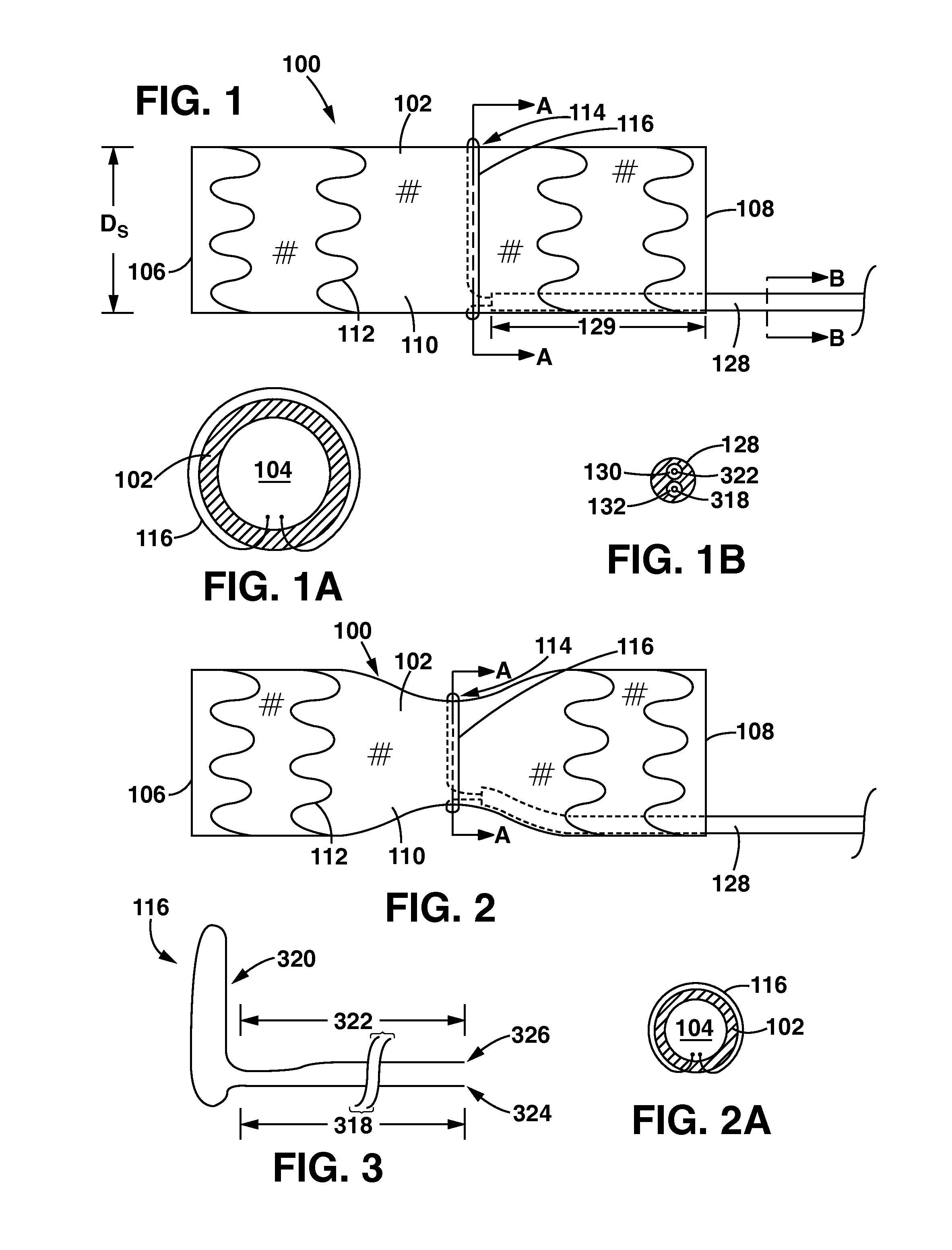Arteriovenous Shunt Having a Flow Control Mechanism
a technology of flow control and shunt, which is applied in the field of arteriovenous (av) shunt assembly, can solve the problems of lung over-inflation, lung over-inflation, and shortness of breath, so as to reduce the rate of blood flow, and constrict the tubular shunt
- Summary
- Abstract
- Description
- Claims
- Application Information
AI Technical Summary
Benefits of technology
Problems solved by technology
Method used
Image
Examples
Embodiment Construction
[0023]Specific embodiments of the present invention are now described with reference to the figures, wherein like reference numbers indicate identical or functionally similar elements. The terms “distal” and “proximal” are used in the following description with respect to a position or direction relative to the treating clinician. “Distal” or “distally” are a position distant from or in a direction away from the clinician. “Proximal” and “proximally” are a position near or in a direction toward the clinician. In addition, the term “self-expanding” is used in the following description with respect to components that have a mechanical memory to return to an expanded deployed configuration from a compressed or constricted delivery configuration. Non-exhaustive exemplary materials that may be used to form self-expanding components include stainless steel, a pseudo-elastic metal such as a nickel titanium alloy (nitinol), a polymer, or a so-called superalloy, which may have a base metal o...
PUM
 Login to View More
Login to View More Abstract
Description
Claims
Application Information
 Login to View More
Login to View More - R&D
- Intellectual Property
- Life Sciences
- Materials
- Tech Scout
- Unparalleled Data Quality
- Higher Quality Content
- 60% Fewer Hallucinations
Browse by: Latest US Patents, China's latest patents, Technical Efficacy Thesaurus, Application Domain, Technology Topic, Popular Technical Reports.
© 2025 PatSnap. All rights reserved.Legal|Privacy policy|Modern Slavery Act Transparency Statement|Sitemap|About US| Contact US: help@patsnap.com



